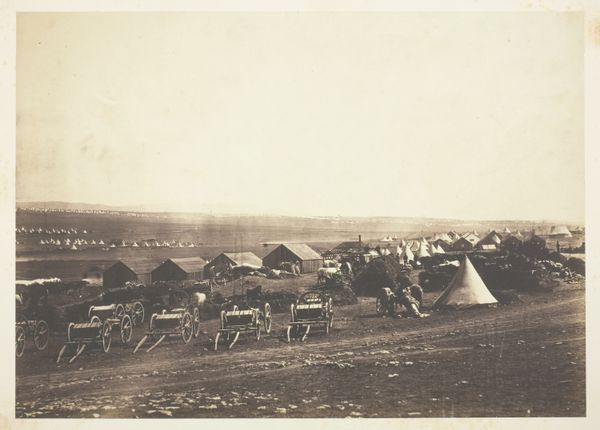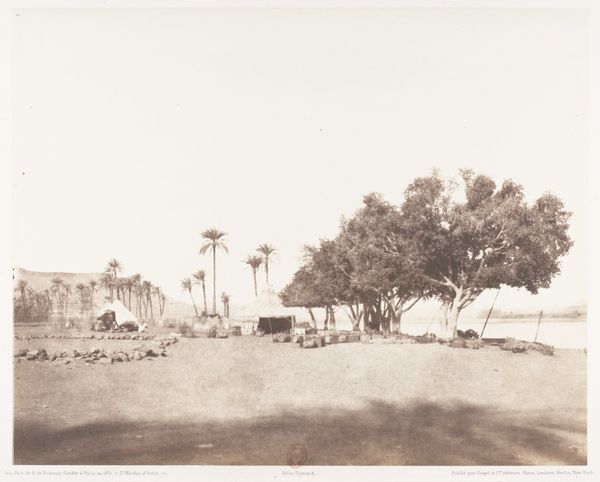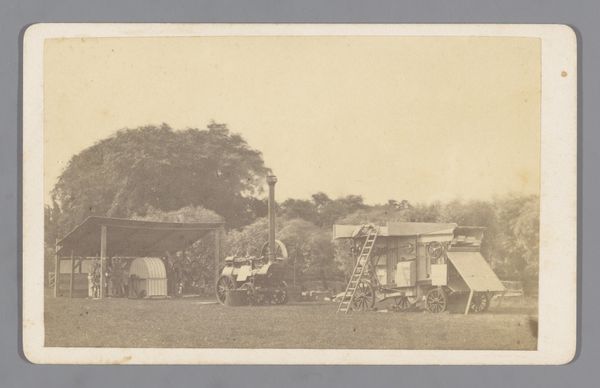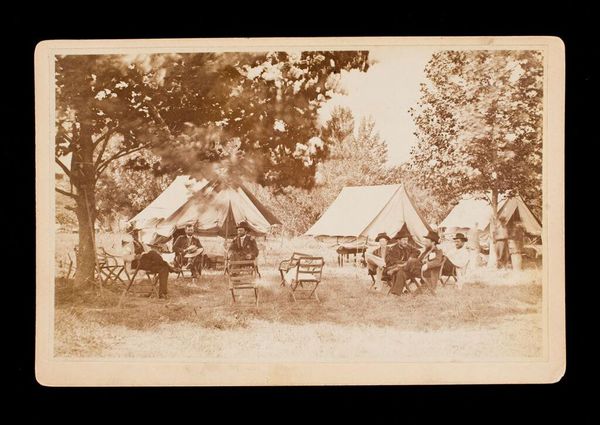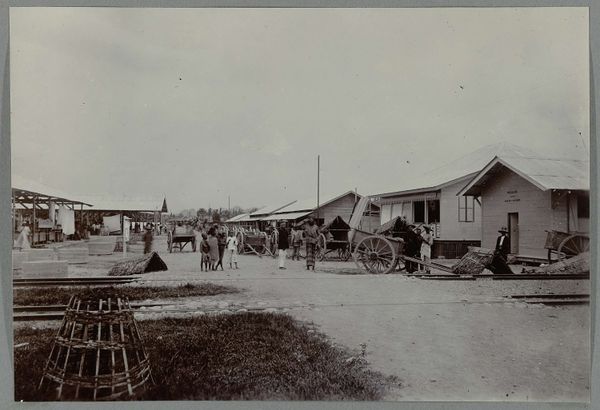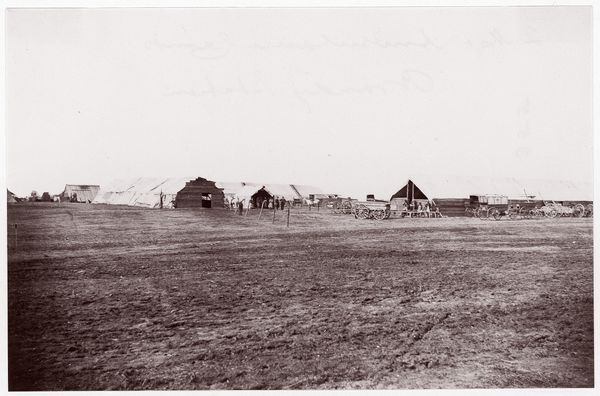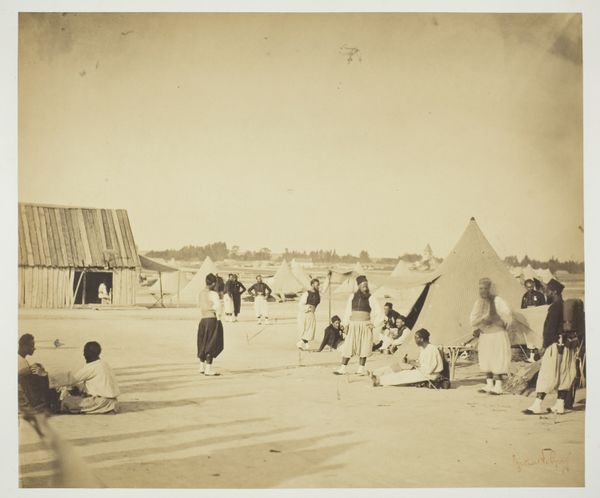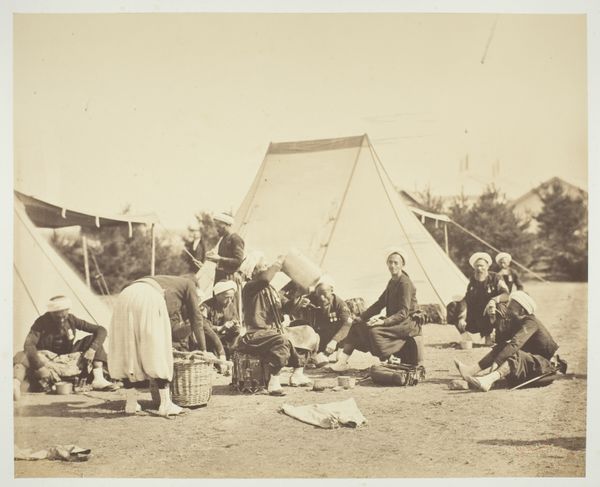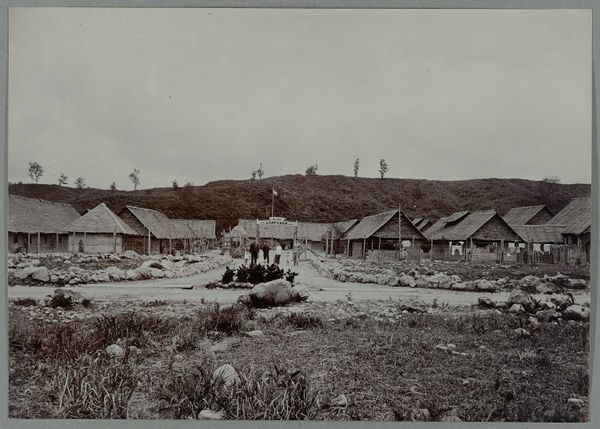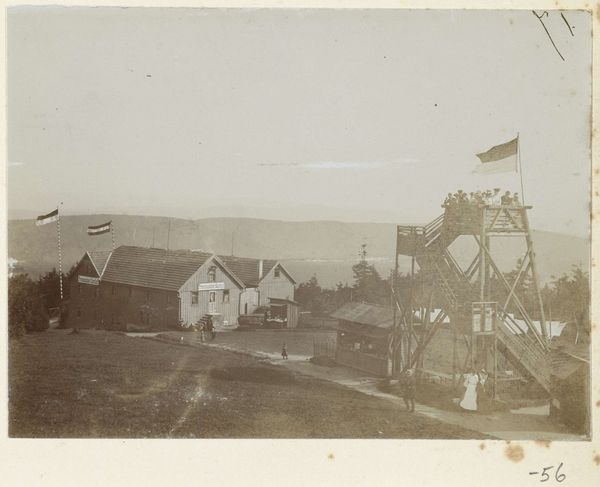
silver, print, photography, albumen-print
#
portrait
#
16_19th-century
#
silver
# print
#
book
#
war
#
landscape
#
photography
#
sketch
#
men
#
united-states
#
history-painting
#
albumen-print
Dimensions: 17.7 × 22.9 cm (image/paper); 31.1 × 44.7 cm (album page)
Copyright: Public Domain
Editor: This is an albumen print called "Headquarters Christian Commission in the Field" taken in 1863. I’m really struck by how makeshift everything looks—the tents, the signage—considering the seriousness of the subject matter: the Civil War. What details stand out to you? Curator: It's a fascinating look at how war and faith intersect through material means. The silver and albumen used to produce this print were both costly and relatively new technologies at the time. Consider how the Christian Commission likely employed these images to raise funds. What does the juxtaposition of "rough" field conditions and expensive materials say about their targeted audience and the message they aimed to convey? Editor: So you're saying the medium itself – the photographic print and its associated cost– was part of the message? Almost a status symbol demonstrating credibility? Curator: Precisely. These prints, made using a specific combination of silver and albumen, wouldn't be mass-produced in the way that photographs are today. Their circulation would have been limited, mostly finding homes among wealthier, sympathetic patrons. It reveals a strategic effort in crafting the image and targeting its distribution for maximum impact. The labour involved in setting up the shot, processing, and printing this photo points toward the organization's commitment to publicity. Editor: That’s not something I’d immediately consider but makes perfect sense. Thinking about who had access to images at that time adds so much more depth. I’m so used to immediate and global access to media today, I wasn’t even considering scarcity and high costs during that period. Curator: Consider too the manual labour necessary for its making: The collodion process, preparing the glass plates...these materials were produced, marketed, and distributed via a network of economic forces. Editor: I see what you mean now. I had never really looked at photographs of the Civil War as commodities themselves. This has shifted my entire perspective on art's relationship with social context and labour.
Comments
No comments
Be the first to comment and join the conversation on the ultimate creative platform.

